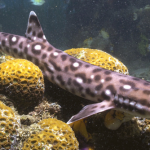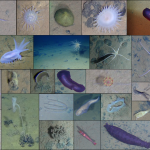
The New York media is all aflame over a shocking discovery at local institution Zabar’s. Zabar’s, an Upper West Side gourmet grocery store is justly famed for its amazing coffee, cheese, and baked goods (the chocolate babka is especially glorious). But for the last 15 years, the lobster salad has been made with freshwater crawfish – it contained no actual lobster at all.
In the New York Times story on the scandalous news, Saul Zabar, the 83-year-old president and co-owner of Zabar’s, defended this unusual labeling scheme:
“If you go to Wikipedia,” he said, “you will find that crawfish in many parts of the country is referred to as lobster.”
He read aloud the beginning of the Wikipedia entry for crawfish: “Crayfish, crawfish, or crawdads — members of the superfamilies Astacoidea and Parastacoidea — are freshwater crustaceans resembling small lobsters, to which they are related.”
By that definition, he said, he could call a product in which the main ingredient — actually, the only seafood ingredient — was crawfish, “lobster salad.”
As a former New York resident and frequent patron of Zabar’s, I felt it was my sacred duty to see if Mr. Zabar’s taxonomy was as perfect as his rugelach. According to science, are crawfish the same as lobster?
Remember the Linnaean system of taxonomy that you learned in high school or college biology? Here’s how it goes for crawfish & lobsters*:
- Phylum Arthropoda: mostly have lots of legs & crunchy outer shells, including insects, millipedes, crabs, etc.
- Subphylum Crustacea: Mostly live in ocean or fresh water. Excludes the major groups of land-dwelling bugs like insects.
- Class Malacostraca: The lobster and shrimp-looking creatures, from crabs to krill to amphipods
- Subclass Eumalacostraca: Excludes the most primitive malacostracans, leptostracans.
- Superorder Eucarida: The lobster and shrimp-looking dudes that don’t brood their own eggs in a special pouch (amphipods and isopods do this). Includes lobster and shrimp-looking dudes along with krill. Bad parents! Bad!
- Order Decapoda: Ten legs. But you probably knew that. Excludes krill.
- Suborder Pleocyemata: Excludes penaeid and sergestid shrimps (“prawns”)
- Infraorder Astacidea: Here’s where this gets interesting. We’ve now excluded most of the other tasty shrimp- and crab-looking dudes. They get their own infraorders – for example, the true shrimps are in Caridea, the true crabs are in Brachyura, the hermit crabs are in Anomura, etc. But we’ve ALSO broken off the tropical spiny lobsters! They ALSO get a separate infraorder: Palinura! What’s left in Astacidea? Just the clawed lobsters and the crawfish!
- Family Nephropoidea (lobsters) and Family Astacoidea (crawfish)
In other words, crawfish are way closer to clawed American lobster than they are to clawless California or Caribbean spiny lobster! Perhaps Mr. Zabar has a background in marine biology, because it is actually more correct to call crawfish “lobsters” than it is to call all those tropical non-clawed lobsters “lobsters.”
Would there have been an uproar if the Zabar’s lobster salad had contained taxonomically incorrect California lobster instead of American lobster? Despite my allegiance to the superior deliciousness of American lobster, I doubt it. To put my “I almost majored in English cause I like to bullshit a lot” hat on, part of the appeal of lobster (along with its deliciousness) is that it’s expensive and special. Crawfish, though also delicious, is far less expensive and is associated with, how shall I say, not so high-class dining. Spiny lobster, though biologically farther apart from Maine lobster/crawfish, is expensive and hard to get like American lobster, and therefore probably would have been an acceptable lobster-like substance. (The fact that we call spiny lobsters “lobsters” and not “spinydads” or something like that probably wouldn’t hurt either.)
Personally, I think “Astacidea Salad” has a certain ring to it. Zabar’s, if you’re reading this, no need to credit me. Just send a couple babka my way.
*Yes, taxonomists, this is HIGHLY oversimplified, and I have left many many things out. I based this taxonomy on my invertebrate bible, Brusca & Brusca, which is probably outdated. Corrections welcome in the comments!






“Part of the appeal of lobster… is that it’s expensive and special.”
Some research on restaurant menu prices showed that American lobster used to be trash food that restaurants were embarrassed to serve. “I’m sorry, there’s nothing but lobster.”
Lobster used to let themselves be caught in tidal pools at low tide, and could be picked up by anyone. Lobsters don’t do that any more, apparently because the selection pressure imposed by harvesting was so strong.
Thanks Zen! I forgot we had a geniune Astacidea expert in the science blogging house. I found this webpage on food history to have some entertaining lobster anecdotes: “These settlers [in Plymouth MA] approached the creatures with less than gustator enthusiasm, but the lobsters’ abundance mande them fit for the tables of the poor…In 1622 Governor William Bradford of the Plymouth Plantation apologized to a new arrival of settlers that the only dish he “could presente their friends with was a lobster…without bread or anyhting else but a cupp of fair water.”
Wow! So, crayfish are even closer relatives to Maine Lobsters than California Lobsters! Craziness!
Just a further note on Lobster historic prices – in the 1700’s and early 1800’s when in tough times, workers (especially servants and apprentices) here in SE Connecticut were fed a lot of lobster, since it was so cheap and plentiful. Got to be so bad that there were cases of workers negotiating for limits to the number of times per week they could be fed lobster.
Also, squat lobsters (sometimes sold as “Langostino lobsters” – see http://neurodojo.blogspot.com/2007/12/future-of-seafood.html) are yet a third group, infraorder Anomura (or Anomala, depending on the taxonomist). This is different yet again than either clawed lobsters (Astacidea) or spiny lobsters (Palinura).
It wouldn’t surprise me if there were species with the common name of “lobster” in yet a fourth taxonomic group.
Same is true for Diamondback terrapins. In Maryland laws limited how many you could feed slaves. Since they were so cheap and abundant they were a preferred food but the slaves were likely to revolt over the monotonous diet. Then of course they became valued for expensive soups and the population crashed.
I think it is the third (i.e. Malacostraca) step which excludes insects.
Most gratuitous shill EVAH for a free babka. Can we collaborate on a piece about Katz’ pastrami sandwiches and sea salt brine next?
Insects actually have their own subphylum, Hexapoda. They are not crustaceans. (Unless there has been a radical revision of the taxonomy of which I am unaware.)
I thought you’d appreciate that! Perhaps we can blackmail Katz’s, threatening to expose their brine as NOT REAL SEA SALT, unless of course they keep DSN Headquarters supplied with yummy sandwiches.
That’s what I meant. Regier et al.[0] put Hexapoda (Insects plus some minor things) as a sister group to Branchiopoda, another paper[1] have them as sister to the clade formed of Malacostraca+Branchiopoda (i.e. they branch off a bit more closely to the root). The most recent paper known to me is the paywalled [2], which has similar results.
[0] Regier, Shultz, Kambic: “Pnacrustacean phylogeny: Hexapods are terrestrial crustaceans …”, Proc.Roy.Soc.B 2005 272, 395-401
[1] Cook, Yue, Akam: “Mitochondrial genomes suggest that …”, Proc.Roy.Soc.B 2005 272 1295-1304
[2] Jerome C. Regier, Jeffrey W. Shultz, Andreas Zwick, April Hussey, Bernard Ball, Regina Wetzer, Joel W. Martin, Clifford W. Cunningham: “Arthropod relationships revealed by phylogenomic analysis of nuclear protein-coding sequences”, doi:10.1038/nature08742,
does anyone else hear the B-52s?
Squat Lobster!!
I think it needs to be a new dance craze that sweeps the nation!
Very cool – thanks! Also the word Pancrustacea makes me think of a delicious lobster pie.
Crayfish is a yearly delicacy here (Sweden). We have to import cheaper ones from US, Turkey et cetera to fill the need. Of course, lobster are *finer*; just not as festive. (/takes the obligatory vodka shot.)
As for workers negotiating more variety of food, it is claimed to have happened with salmon in the northern part during the early days of timbering. Now you have to pay dearly…
Lobster also used to be fed to prisoners in Maine’s state prisons, and similarly, they negotiated the number of times a week that prisoners could be fed lobster. It was considered a “poverty food”. My how times have changed, given that my lobster roll last week cost $17.
The owner might as well mix tomatoes and sunflower seeds and call it a fruit salad if scientific accuracy was his goal.